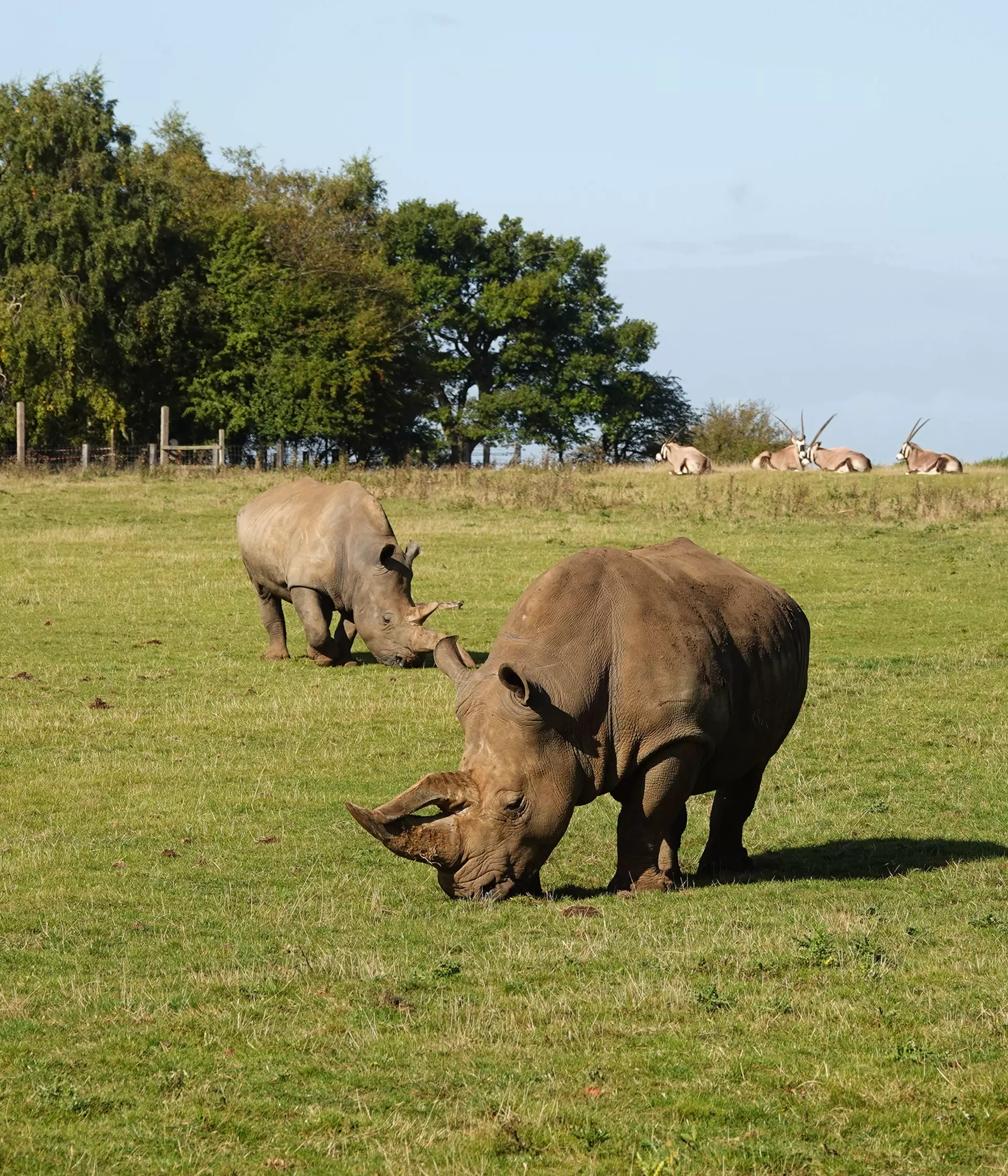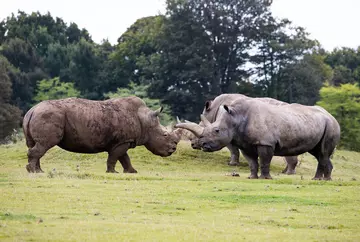
White rhino facts

How many rhino species are there?
The rhinoceros has been around for 50 million years and today just five species remain. One of these species is the white rhino, or white rhinoceros, found in grasslands in Africa’s bushveld (suptropical woodland) savannah.
What do white rhinos look like?
- Both males and females of the species have two horns, with the longest at the front. These are used in defence against rival rhinos and predators.
- Rhino horns are made of densely packed, tiny tubes of keratin (a protein that fingernails and hair are made of). And, like nails and hair, they grow back if they are cut off. The dark core of the horn is strengthened by calcium and melanin.
- The broad square-shaped upper lip comes in handy for cropping large quantities of grasses.
- The white rhino has a pronounced shoulder hump of muscle and a thick neck to support its massive head, which is lowered for grazing for much of the day.
- Don’t be fooled by the name – a white rhino’s nearly hairless skin is slate-grey to yellow-brown in colour, not white.
- The largest rhinoceros species, a male white rhino weighs in at 2.3 tonnes and reaches 3.7-4 metres from head to tail, while females are slightly smaller at 1.7 tonnes and 3.4-3.65 metres in length.
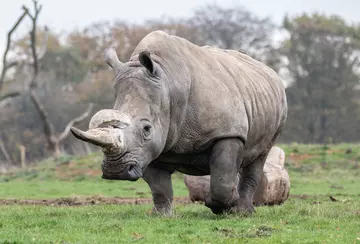
Are there rhinos at Whipsnade Zoo?
Yes, Whipsnade Zoo is home to two species of rhino: southern white rhinos and greater one-horned rhinos.
Visit our rhinos at Whipsnade Zoo
Learn more about our 'crash' of seven southern white rhinos:
Sizzle (or Nsiswa)
- Date of birth: Exact date unknown, but born in 1988
- Place of birth: Hluluwe-Umfolozi reserve in South Africa
- Gender: Male
Sizzle, our only male, is a firm favourite of many keepers that have worked with him, is a big softy at heart and loves a good scratch! He's our chunkiest white rhino and has shorter, thicker horns than the girls. However, Mikumi gives him a run for his money in terms of size! He's dad to calf, Nandi.
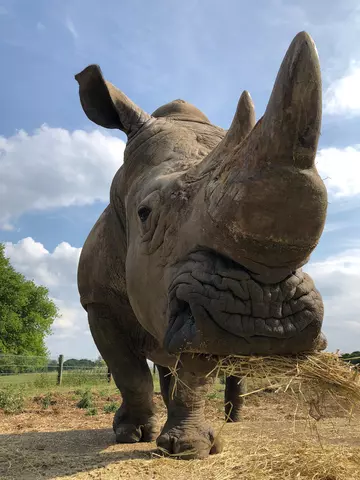
Mikumi
- Date of birth: 24 September 1990
- Place of birth: Edinburgh Zoo
- Gender: Female
Mikumi is the biggest female and is fairly close to the size of Sizzle. Her and Clara are the most dominant and grumpy! Her top horn has been cut down slightly.
Bertha
- Date of birth: Exact date unknown but was born in 1998
- Joined us from: Knuthenborg Zoo
- Gender: Female
Bertha is probably our most stubborn white rhino! She is very independent but has now made very good friends with Jaseera who doesn’t leave her side, along with Fahari who is often seen nearby. You can tell her apart from the others as her top horn crosses over her bottom horn.
Tuli
- Date of birth: 15 January 2007
- Place of birth: Efurt Zoo, Germany
- Gender: Female
Tuli is very energetic and food orientated. She's one of the quieter rhinos in the herd, often seen with Clara and Mikumi, but gets on with everyone. She has your ‘typical’ rhino horns, which are both curved and pointing upright. She's mum to calf Nandi.
Jaseera
- Date of birth: 12 January 2011
- Joined us from: Knowsley Safari Park
- Gender: Female
When Jaseera first arrived with Fahari (from different collections), she was a mother figure to her, and is still just as close, and has also formed an attachment with Bertha. You can tell Jaseera apart from the others as she's lost her horn. This doesn’t hurt her at all, and it has started growing back already, but will take a good few years to fully grow back.
Fahari
- Date of birth: 8 September 2017
- Joined us from: West Midlands Safari Park
- Gender: Female
Fahari is our smallest white rhino (apart from calf Nandi), but can stand her ground against all of the older rhinos! She is very close with Jaseera and Bertha. She loves a scratch and will lift her leg right up!
Nandi
- Date of birth: 21 August 2021
- Place of birth: ZSL Whipsnade Zoo
- Gender: Female
Nandi, which means ‘sweet one’ in Zulu, was born to mum Tuli and dad Sizzle at 4am on 21 August. She took her first steps a couple of weeks later and is getting more confident every day.
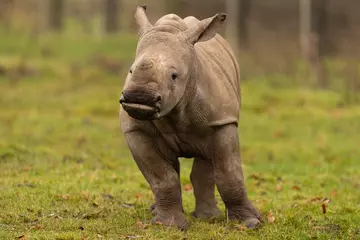
- Rhino horn is worth more, by weight, than either gold or diamonds.
- The horns are used in traditional medicine in Asia and also to make dagger handles in the Middle East, and poaching is a huge problem.
- In recent years the impact of the Illegal Wildlife Trade (IWT) has reached unprecedented levels.
- ZSL is tackling IWT through community engagement, patrol techniques, training and technology.
Find the perfect present in our online shop with our rhino gifts! Every purchases supports ZSL's vital science and conservation work.
